Трябва да сте влезли в
-
moreX
-
Компоненти
-
-
Category
-
полупроводници
- Диоди
- Тиристори
-
Електрически изолирани модули
- Електроизолирани модули VISHAY (IR).
- Електроизолирани модули INFINEON (EUPEC).
- Електрически изолирани модули на Semikron
- Електроизолирани модули POWEREX
- Електроизолирани модули IXYS
- Електроизолирани модули от POSEICO
- Електрически изолираните модули на ABB
- Електроизолационни модули от TECHSEM
- Go to the subcategory
- Мостови токоизправители
-
Транзистори
- GeneSiC транзистори
- Mitsubishi SiC MOSFET модули
- STARPOWER SiC MOSFET модули
- ABB SiC MOSFET модули
- IGBT модули от MITSUBISHI
- Транзисторни модули MITSUBISHI
- MITSUBISHI MOSFET модули
- Транзисторни модули ABB
- IGBT модули от POWEREX
- IGBT модули - от INFINEON (EUPEC)
- Полупроводникови елементи от силициев карбид
- Go to the subcategory
- Шофьори
- Силови блокове
- Go to the subcategory
- Преобразуватели за ток и напрежение LEM
-
Пасивни компоненти (кондензатори, резистори, предпазители, филтри)
- Резистори
-
Предпазители
- Миниатюрни предпазители за електронни системи серия ABC и AGC
- Бързодействащи тръбни предпазители
- Забавени вложки с GL/GG и AM характеристики
- Изключително бързи предпазители
- Британски и американски стандартни бързодействащи предпазители
- Бързодействащи предпазители европейски стандарт
- Тягови предпазители
- Предпазители за високо напрежение
- Go to the subcategory
-
Кондензатори
- Кондензатори за двигатели
- Електролитни кондензатори
- Icel филмови кондензатори
- Силови кондензатори
- Кондензатори за постояннотокови вериги
- Кондензатори за компенсация на мощността
- Кондензатори за високо напрежение
- Кондензатори за индукционно нагряване
- Импулсни кондензатори
- DC LINK кондензатори
- Кондензатори за AC/DC вериги
- Go to the subcategory
- Филтри против смущения
- Суперкондензатори
- Защита от пренапрежение
- Разкриващи емисионни филтри TEMPEST
- Защита от пренапрежение
- Go to the subcategory
-
Релета и контактори
- Теория на релетата и контакторите
- AC 3-фазни твърдотелни релета
- DC твърдотелни релета
- Регулатори, системи за управление и аксесоари
- Мек старт и реверсивни контактори
- Електромеханични релета
- Контактори
- Ротационни превключватели
-
Еднофазни AC твърдотелни релета
- Еднофазни променливотокови полупроводникови релета Серия 1 | D2425 | D2450
- Еднофазни AC полупроводникови релета CWA и CWD серия
- Еднофазни AC полупроводникови релета серии CMRA и CMRD
- Еднофазни AC твърдотелни релета PS серия
- AC твърдотелни релета двойни и четворни серии D24 D, TD24 Q, H12D48 D
- Еднофазни полупроводникови релета от серия GN
- Еднофазни променливотокови твърдотелни релета серия CKR
- Монофазни AC релета за DIN шина ERDA и ERAA СЕРИЯ
- Монофазни AC релета за ток 150А
- Двойни твърдотелни релета, интегрирани с радиатор на DIN шина
- Go to the subcategory
- AC еднофазни печатни твърдотелни релета
- Интерфейсни релета
- Go to the subcategory
- Ядра и други индуктивни компоненти
- Радиатори, Варистори, Термична защита
- Фенове
- Климатик, Аксесоари за табла, Охладители
-
Батерии, зарядни устройства, буферни захранвания и преобразуватели
- Батерии, зарядни устройства - теоретично описание
- Литиево-йонни батерии. Персонализирани батерии. Система за управление на батерията (BMS)
- Батерии
- Зарядни за батерии и аксесоари
- UPS и буферни захранвания
- Конвертори и аксесоари за фотоволтаици
- Съхранение на енергия
- Водородни горивни клетки
- Литиево-йонни клетки
- Go to the subcategory
-
Автоматизация
- Подемници Spiralift
- Части за дронове Futaba
- Крайни изключватели, Микро ключове
- Сензори, Преобразуватели
- Пирометри
- Броячи, Релета за време, Панелни измервателни уреди
- Индустриална защитна екипировка
- Светлинни и звукови сигнали
- Термовизионна камера
- LED дисплеи
- Бутони и превключватели
- Go to the subcategory
-
Кабели, Litz проводници, Тръбопроводи, Гъвкави връзки
- Проводници
- Кабелни щуцери и ръкави
- лица
-
Кабели за специални приложения
- Удължителни и компенсаторни кабели
- Кабели за термодвойки
- Свързващи кабели за PT сензори
- Многожилни кабели темп. -60°C до +1400°C
- Кабели средно напрежение SILICOUL
- Кабели за запалване
- Нагревателни кабели
- Едножилни кабели темп. -60°C до +450°C
- Железопътни проводници
- Нагревателни кабели в Ex
- Кабели за отбранителната промишленост
- Go to the subcategory
- тениски
-
Плитки
- Плоски плитки
- Кръгли плитки
- Много гъвкави плитки - плоски
- Много гъвкави плитки - кръгли
- Цилиндрични медни оплетки
- Медни цилиндрични оплетки и капаци
- Гъвкави ленти за заземяване
- Медни оплетки с PVC изолация - температура до 85 градуса
- Плоски алуминиеви оплетки
- Комплект за свързване - оплетки и тръби
- Стоманени плитки
- Go to the subcategory
- Тягово оборудване
- Накрайници за кабели
- Изолирани гъвкави релси
- Многослойни гъвкави шини
- Системи за управление на кабели
- Go to the subcategory
- View all categories
-
полупроводници
-
-
- Suppliers
-
Applications
- CNC машини
- DC и AC задвижвания (инвертори)
- Двигатели и трансформатори
- Енергетика
- Енергийни банки
- Заваръчни машини и заварчици
- Захранвания (UPS) и токоизправителни системи
- Измерване и регулиране на температурата
- Изследвания и лабораторни измервания
- Индукционно нагряване
- Индустриална автоматизация
- Индустриална защитна екипировка
- Компоненти за зони с опасност от експлозия (EX)
- Машини за сушене и обработка на дървесина
- Машини за термоформоване на пластмаси
- Минно дело, металургия и леярство
- Оборудване за разпределителни и контролни шкафове
- ОВК автоматизация
- Печат
- Трамвайна и железопътна тяга
-
Инсталация
-
-
Индуктори
-
-
Индукционни устройства
-
-
Обслужване
-
- Contact
- Zobacz wszystkie kategorie
Distance and pressure transducers

Measuring transducers are used to convert physical quantities into other physical quantities according to specific relationships. Among industrial devices of this type, transducers for electrical values such as voltage or current are the most common. In systems with sensors, transducers allow the power of the transformed signal to be increased in order to facilitate its processing in further industrial processes.
Distance transducers most often convert force or speed into a corresponding output signal in analogue or digital form.
Pressure transducers are used to measure the pressure of gases or liquids, which it converts into a proportional output signal.
In the following article, we will introduce you to the principle of operation and types of specific solutions of distance and pressure transducers.
Working principle of distance and pressure transducers
-
Distance transducer
The working principle of distance transducers is based on sending some kind of signal, e.g. laser, infrared LED, ultrasonic waves or information about the movement and position of the test object by means of a cable attached to it. Then, based on the information about the signal returning to the transducer or the change in position of the test object, an appropriate output signal is generated from the transducer element. This information may include the intensity of the returning signal, the time required for the signal to return, the motion generated on the transducer element, etc. Many devices have additional components that appropriately amplify a given signal so that it can be easily worked on further in industrial processes.
-
Pressure transducer
The most common pressure transducer designs include a force collector, such as a flexible diaphragm, and a conductive element. Such an element uses a dependent resistive, capacitive, or inductive method to generate an electrical signal. The type of measurement method will be determined by the components used to build the transducer.
Pressure transducers use strain gauges to measure the force acting on them. Strain gauges are deformed and this causes a change in the voltage they produce. The pressure measurement is based on the degree of voltage change.
There are also advanced versions of pressure transducers that use capacitive or piezoelectric sensors instead of strain gauges. These are chosen based on the range, operating environment and precision required of the pressure sensor.
Types of transducers available on the market
The type of transducer depends on what signal it is capturing e.g. distance using reflected light and motion using a cable in the case of distance transducers , or the type of pressure being measured in the case of pressure transducers. An additional factor influencing the type may also be the output signal of the transducer e.g. current voltage, current intensity or digital value. Depending on these factors, the transducer may differ in its internal design.
Examples of distance transducers
There are many unique options to choose from for distance transducers. We focus primarily on three varieties of distance sensors:
- IR LED distance transducers work on the principle of triangulation, measuring distance based on the angle of the reflected beam. The beam of infrared light emitted by the LED is reflected from the object under observation at a certain angle. The reflected beam is read by a transducer detector to process the collected data into a specific output signal.
Such solutions are characterized by their small size, ability to work at any time of day or night, and ability to measure distances from objects with complex surfaces. The disadvantages of such applications, however, are a limited measuring range and dependence on environmental conditions and, for example, the colour of the measuring object.
- Ultrasonic distance transducers detect the distance to objects by emitting high frequency sound waves. The emitter sends the wave toward the object and activates a timer. The wave bounces off the object and is captured by the transducer's receiver, then the timer is stopped. The distance is calculated from the speed of sound and the travel time of the high frequency wave.
The advantages are transparency and the ability to work with objects of any color. The solution does not consume as much power as other applications, but also has a limited measurement range, low resolution, inability to measure objects with uneven surfaces as well as objects that move at high speed.
- Link Distance Transducers measure position using a string that coils and unwinds on a measuring spool. The end of the string is attached to the test object, and its motion affects the spool. A rotary reader (potentiometer or encoder) transmits the rotational motion of the spool to the appropriate components, which convert it into an output signal.
Examples of pressure transducers
For pressure transducers, there are three defined values for measuring pressure. Although there are other types, such as vacuum or sealed gauge, all can be classified into these three categories. For the diaphragm type, it is easiest to understand the reference pressure as the pressure exerted across the diaphragm from the process being measured.
- Absolute pressure transducers measure pressure relative to an ideal vacuum using absolute zero as a reference. An example is a barometric pressure transducer. They also include sealed pressure gauges in which the signal has been shifted to match the pressure of the gauge at the time of construction.
- Gauge pressure transducers measure pressure relative to atmospheric pressure. An example of such a sensor is a tire pressure sensor. It also includes vacuum sensors whose signals are inverted so that they signal a positive result when the measured pressure is lower than atmospheric pressure.
- Differential pressure transducers measure the difference between two pressures on each side of the sensor. An example is a fluid pressure transducer, in which the level of the fluid above and below is measured.
Applications for transducers in industry
Distance transducer applications:
- Automation and Robotics;
- Smart cars;
- Drones and unmanned vehicles;
- TVs, computers;
- Security systems such as alarms;
- Systems for industrial process control and monitoring.
Pressure transducer applications:
- Pressurized Engine Systems;
- Production and assembly lines;
- Containers with production material;
- Sanitary systems in the pharmaceutical industry;
- Control systems, e.g. gas leakage detection;
- HVAC systems.
Related products
Related posts
 Now available – DC/DC converters from PREMIUM
Now available – DC/DC converters from PREMIUM
 New release in DACPOL lighting for lathes – Kira covers
New release in DACPOL lighting for lathes – Kira covers

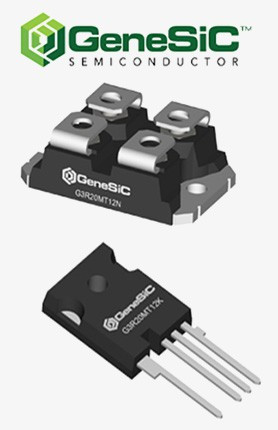
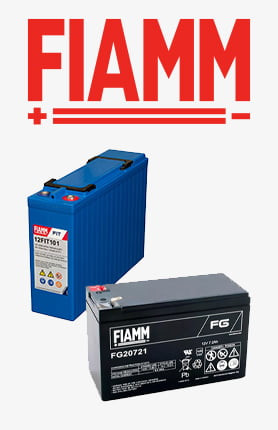
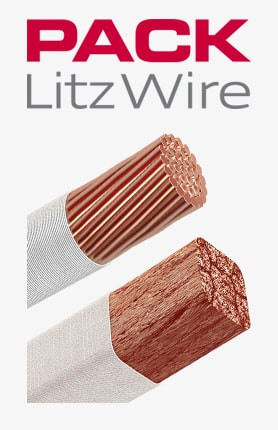
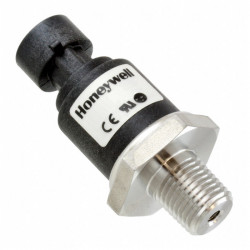
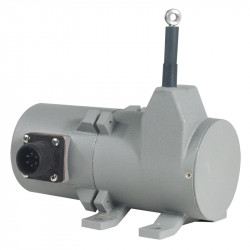
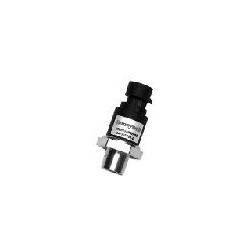
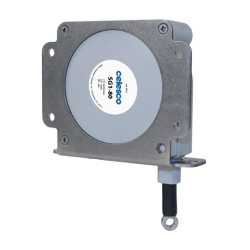
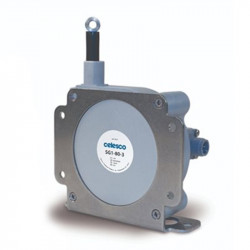
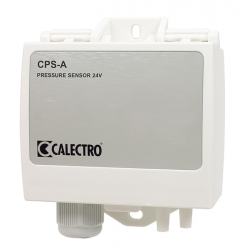
Leave a comment